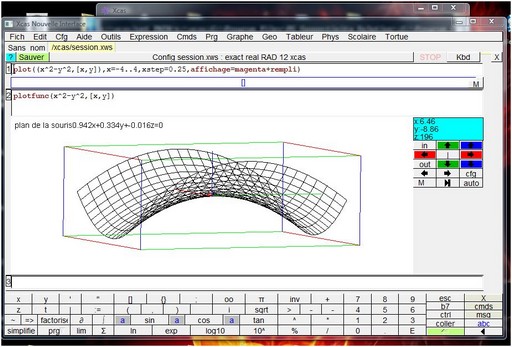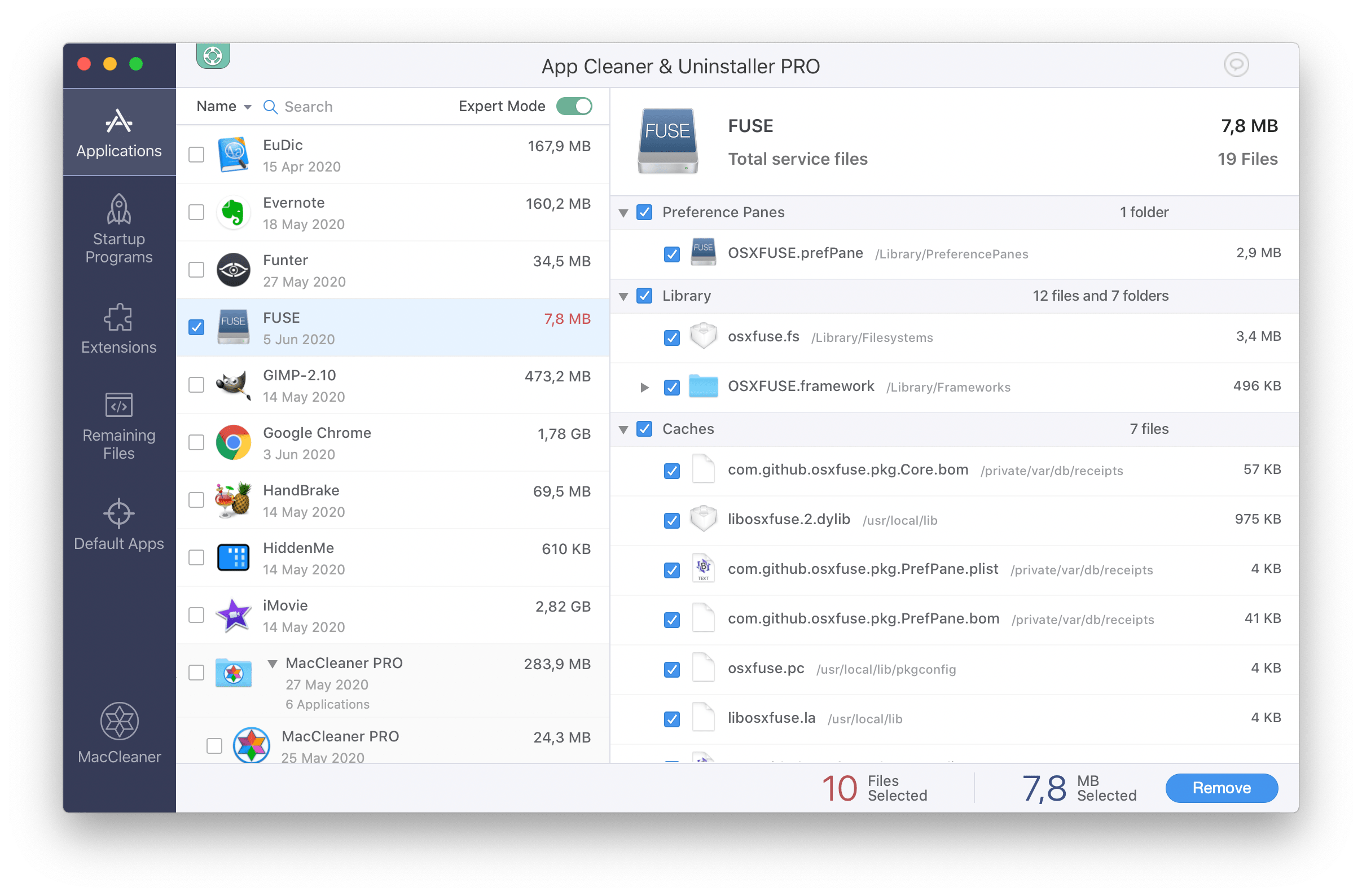An update to FuseHFS to work with FUSE for OS X
Apple is nothing if not willing to drop support for outdated technologies, so Macs running OS X 10.6 onward can't write to HFS standard volumes. Reading should still work as of 10.9, but it would be unwise to rely on Apple continuing to support this. Thus the need for FuseHFS.
To uninstall FUSE for OS X open the FUSE for OS X system preference pane and click the Uninstall button. If the two preference panes are still there after running both uninstalls, then just right-click on them and select the 'Remove. Preference Pane' option. And reboot your Mac. I'm thrilled to see that FUSE has been ported, ssh file systems are a blessing. Er, this site is called Mac OS X Hints. I'm not sure how you got the idea that it was a Linux forum. Anyway, thanks for the tip regarding an uninstall function in the MacFuse preference pane. In more technical terms, Fuse4X implements a mechanism that makes it possible to implement a fully functional file system in a user-space program on Mac OS X (10.5 and above). It provides API compatible with the FUSE (File-system in USEr space) API that originated on Linux. Therefore, many existing FUSE file systems become readily usable on Mac. MacFUSE: FUSE for the Mac! Third-Party Products. Improve macOS 10.15 compatibility. Fix an issue, that can trigger a kernel panic when mounting FUSE volumes with the local option and enabling Spotlight on the volume. For details see #624. Improve performance of GETATTR file system operation for file systems based on the Objective-C FUSE framework. Add support for 64 bit file system IDs (vafsid64) on macOS 10.11 and later.
The previous release of this FUSE module was designed for MacFUSE, which is no longer maintained and doesn't work on newer versions of OS X. The FUSE for OS X project picked up the FUSE-on-Mac baton, so that's the way to go from now on. The original FuseHFS code was published under GPL v2, which is maintained for this version.
7/28/2014: Release of 0.1.4 beta
This version should work with OSXFUSE 2.6.0 or later, on OS X 10.6 or later. However, only a few configurations have been tested. As such, please note this WARNING! This is beta software. It has been tested on several configurations, but your system may be different, and there may be special uses that have not been tested. It never hurts to back up any important data before using new software. It would be good to read the notes about the original version before using this one. Submit bug reports to joel [(at]) macpaint.org
Thanks to Jesús Álvarez for writing FuseHFS originally and releasing it as open source. This version is just a bug fix, so we are still indebted to him for the original.
Status 7/19/2014
The problem with 0.1.3 is the -oallow_other option. This option can only be used by privileged users. On older systems, the program mount_fusefs did in fact run as root, but now mount_osxfusefs does not, which is for the better. It seems to me that users who are in group 80 should have been able to use this option, but evidently not. Group 80 (admin) is the default 'MacFUSE admin' and 'OSXFUSE admin' group, so FUSE should run as a member of this group, but it seems to prefer 20 (staff) for some reason. My understanding of the option may be wrong anyway, if wheel is actually required. For now, leaving out this option will allow FuseHFS to work for the user who mounts the volume. Considering the somewhat niche use of this filesystem these days, this is probably OK for now.
I changed fusehfs (specifically, mount_fusefs_hfs) to only attempt this option if the user is root. There might be a way to add this back in later for all users, but for now omitting this function for non-root users is better than not functioning at all.
There's a handy tool for Mac users that I rarely see getting use, theSSHFS filesystem. SSHFS is aFUSEfilesystem uses theSSH File Transfer Protocol(SFTP) as it's backend. The short of it is that you can mount a remotedirectory on your local machine with nothing more than SSH access.
FUSE is the Filesystem in Userspace, a operating system extensionthat allows non-root users to create mountable filesystems. FUSE isavailable for most UNIX-like operating systems, including OS X.
Installation
The first step to using SSHFS is to installFUSE for OS X (There's a prior versioncalled MacFUSE, you don't want that). Once installed, reboot your Mac.
By itself, FUSE for OS X doesn't do much, it provides the layer foruserspace filesystems, but no filesystems itself, sodownload (found on the FfOSX page) andinstall SSHFS as well.
Mounting

Now that you have SSHFS installed, you can create a local SFTP backedvolume with the sshfs command.
First you need a directory that you can mount the filesystem on:
Then run sshfs:

The first option is the remote path, it can contain a username as welli.e. alice@server.example.com:/var/www. Because SSHFS uses SSH under thehood, your ~/.ssh/config settings are honored. Whatever ssh*something* does will apply to sshfs *something*:path. You canalso leave of the path to the remote home directory i.e sshfsserver.example.com: ..
When you are done, you can unmount the filesystem with:
Or ejected it in the Finder.
Options
-o defer_permissions is important! The default behavior is use thenormal system of checking UIDs for file access. Unless you have the same UIDon both your Mac and the remote system, this is probably not going towork. defer_permissions let's the remote system handle permissionchecks, if you can access a file on the server, you will be to accessit locally. If you're the kind of person who make sure that your UIDsare the same everywhere, then you need help, but you don't needdefer_permissions.
-o volname=Server sets the name that the volume will have in theFinder. Otherwise it's called something like OSXFUSE Volume 0 (sshfs)
Mount Location
Where you mount it matters as that's where the drive icon willappear. In the above example, I create the local mount point in theDesktop folder, which makes the drive appear on the Desktop whenmounted. The downside of that, is then when the drive is not mounted,you have an empty folder that appear on the Desktop.
Another popular approach is to mount it in /Volumes, where OS Xtraditionally mounts drives.
The OS will automatically remove the directory when you unmount,you'll need to create it each time, but you won't need to clean it up.
Wherever you mount it, the drive icon will always appear in the Finderunder Devices -> Your Computer. And, of course, if you're usingcommand line, the drive icon is pretty much a non-issue.
Sharing with Others
Fuse For Mac Os X Mojave
By default, the file system is only visible to the person that mountedit. To allow other users to see it you can add -o allow_other to thecommand line. This can be a little dangerous when combined withdefer_permissions as everyone will have the permissions of theaccount that was used for the SSH connection. Use this option with care.
Workflow

Now that you have SSHFS installed, you can create a local SFTP backedvolume with the sshfs command.
First you need a directory that you can mount the filesystem on:
Then run sshfs:
The first option is the remote path, it can contain a username as welli.e. alice@server.example.com:/var/www. Because SSHFS uses SSH under thehood, your ~/.ssh/config settings are honored. Whatever ssh*something* does will apply to sshfs *something*:path. You canalso leave of the path to the remote home directory i.e sshfsserver.example.com: ..
When you are done, you can unmount the filesystem with:
Or ejected it in the Finder.
Options
-o defer_permissions is important! The default behavior is use thenormal system of checking UIDs for file access. Unless you have the same UIDon both your Mac and the remote system, this is probably not going towork. defer_permissions let's the remote system handle permissionchecks, if you can access a file on the server, you will be to accessit locally. If you're the kind of person who make sure that your UIDsare the same everywhere, then you need help, but you don't needdefer_permissions.
-o volname=Server sets the name that the volume will have in theFinder. Otherwise it's called something like OSXFUSE Volume 0 (sshfs)
Mount Location
Where you mount it matters as that's where the drive icon willappear. In the above example, I create the local mount point in theDesktop folder, which makes the drive appear on the Desktop whenmounted. The downside of that, is then when the drive is not mounted,you have an empty folder that appear on the Desktop.
Another popular approach is to mount it in /Volumes, where OS Xtraditionally mounts drives.
The OS will automatically remove the directory when you unmount,you'll need to create it each time, but you won't need to clean it up.
Wherever you mount it, the drive icon will always appear in the Finderunder Devices -> Your Computer. And, of course, if you're usingcommand line, the drive icon is pretty much a non-issue.
Sharing with Others
Fuse For Mac Os X Mojave
By default, the file system is only visible to the person that mountedit. To allow other users to see it you can add -o allow_other to thecommand line. This can be a little dangerous when combined withdefer_permissions as everyone will have the permissions of theaccount that was used for the SSH connection. Use this option with care.
Workflow
As I've previously written, myperfered workflow for uploading to servers is to use a combination ofMake/Rake and rsync. What I really like SSHFS for is browsing. Usingthe Finder I can open a folder and use the Quick Look feature to, say,search through a directory of images.
However, you can just as easily read and write files on the serverthrough SSHFS, allowing you to apply your favor desktop tools to theremote files.
Additional Filesystem
There are wide variety of filesystems for FUSE, but unfortunately,most of them have not been ported to OS X. My favorite, conceptuallyanyway, I haven't used it, isPNGDrive, a file system thatautomatically hides data in PNG files usingSteganography
In terms of file systems that actually work under OS X, there's alist here: Casio privia drivers for macbook.
Mac Fuse For Os X 10.8
The most useful are probably:
fuse-ext2 which allowsyou to mount ext2, ext3, and ext4 devices and images on your Mac andNTFS-3G for NTFS.
